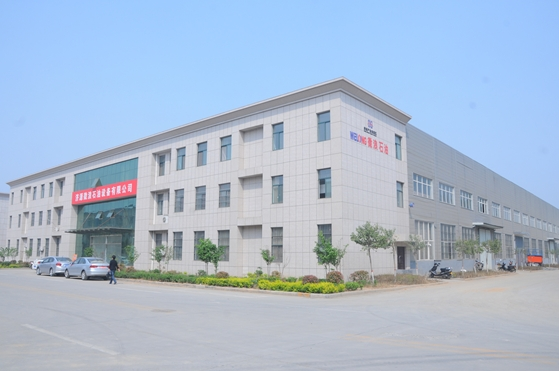Applications of Taper Mills in Wellbore Operations
Debris Removal and Wellbore Cleaning
Taper mills are extensively used for clearing debris and cleaning wellbores. Their unique tapered design allows them to effectively grind and remove various types of obstructions, including cement fragments, metal shavings, and accumulated scale. This cleaning process is crucial for maintaining well integrity and ensuring unobstructed flow paths for production fluids. The abrasive surface of the taper mill, combined with its rotational motion, efficiently breaks down and removes even the most stubborn deposits, restoring the wellbore to its optimal condition.
Sidetracking and Whipstock Operations
In sidetracking operations, taper mills play a vital role in creating a smooth transition for directional drilling. They are used to mill out a section of the existing casing, allowing the drill string to deviate from the original wellbore path. This technique is particularly valuable when operators need to bypass damaged sections of the well or access new hydrocarbon-bearing zones. The tapered design of these mills ensures a gradual and controlled cutting action, minimizing the risk of damage to surrounding formations and ensuring a clean exit point for the new wellbore trajectory.
Fishing Operations and Equipment Retrieval
Taper mills are invaluable tools in fishing operations, where they are used to retrieve lost or stuck equipment from the wellbore. When drilling tools, production components, or other objects become lodged in the well, taper mills can be employed to mill around the obstruction, creating space for fishing tools to engage and remove the trapped items. The ability of taper mills to cut through various materials, including metal and cement, makes them versatile in addressing a wide range of fishing challenges, thereby reducing costly downtime and potential well abandonment scenarios.
Design Features and Operational Considerations of Taper Mills
Cutting Structure and Material Composition
The effectiveness of a taper mill largely depends on its cutting structure and material composition. These tools are typically constructed from high-strength steel alloys, capable of withstanding the extreme pressures and temperatures encountered in deep wellbores. The cutting surface is often reinforced with tungsten carbide inserts or diamond-impregnated segments, providing exceptional wear resistance and cutting efficiency. The arrangement of cutting elements on the taper mill's surface is carefully designed to optimize debris removal and maintain a consistent cutting action throughout the operation.
Size and Taper Angle Selection
Selecting the appropriate size and taper angle of the mill is crucial for successful operations. Taper mills are available in various diameters and lengths to accommodate different wellbore sizes and operational requirements. The taper angle, which can range from 5 to 15 degrees, is chosen based on the specific application and the nature of the obstruction being addressed. A steeper taper angle may be preferred for more aggressive cutting, while a gentler taper might be selected for precision work or in situations where minimizing damage to the surrounding casing is paramount.
Rotational Speed and Weight on Bit Considerations
The operational parameters of taper mills, particularly rotational speed and weight on bit (WOB), significantly influence their performance and longevity. Operators must carefully balance these factors to achieve optimal cutting efficiency while minimizing tool wear and preventing damage to the wellbore. Higher rotational speeds can increase cutting rates but may also lead to excessive vibration and premature tool failure. Similarly, applying appropriate WOB is essential for maintaining consistent contact with the target surface without overloading the mill. These parameters are often adjusted in real-time based on downhole conditions and feedback from surface monitoring systems.
Advancements and Future Trends in Taper Mill Technology
Integration of Sensor Technology
The integration of advanced sensor technology is revolutionizing taper mill operations. Modern mills are increasingly equipped with built-in sensors that provide real-time data on downhole conditions, cutting performance, and tool wear. This information allows operators to make informed decisions, optimizing milling parameters on the fly and extending tool life. Additionally, these sensors can detect changes in formation hardness or unexpected obstructions, enabling swift adjustments to prevent tool damage and ensure efficient operation.
Development of Hybrid Milling Systems
Innovative hybrid milling systems are emerging, combining the capabilities of taper mills with other downhole tools. These integrated systems may incorporate jetting nozzles for enhanced debris removal, or combine milling and fishing functionalities in a single tool string. Such hybrid designs aim to increase operational efficiency by reducing the number of trips required for complex well intervention tasks. This trend towards multifunctional tools reflects the industry's focus on minimizing rig time and associated costs while maximizing operational flexibility.
Eco-friendly and Sustainable Milling Solutions
As the oil and gas industry increasingly emphasizes environmental sustainability, taper mill manufacturers are exploring more eco-friendly materials and designs. This includes developing mills with biodegradable components or utilizing recycled materials in tool construction. Additionally, research is being conducted on milling techniques that minimize the generation of fine particulates, reducing environmental impact and improving well cleanup processes. These advancements align with the industry's broader goals of reducing its ecological footprint while maintaining operational excellence.
In conclusion, taper mills continue to be essential tools in the oil and gas industry, offering versatile solutions for wellbore maintenance, intervention, and recovery operations. Their applications span from debris removal and wellbore cleaning to sophisticated sidetracking and fishing operations. As technology advances, taper mills are evolving to meet the growing demands for efficiency, precision, and environmental sustainability in drilling and production activities. For more information on cutting-edge taper mill solutions and their applications in challenging wellbore environments, please contact us at oiltools15@welongpost.com.

